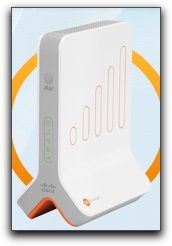Verify Turned-Off Apple Wireless Keyboard
Can't tell if you've turned off your Apple Wireless Keyboard to prevent it from waking up an iOS device or running down its batteries? Tap the Caps Lock key, and if it illuminates, the keyboard is on; otherwise not.
Written by
Adam C. Engst
Recent TidBITS Talk Discussions
- Alternatives to MobileMe for syncing calendars between iPad/Mac (1 message)
- Free anti-virus for the Mac (20 messages)
- iTunes 10 syncing iPod Touch 4.1 (2 messages)
- Thoughts about Ping (16 messages)
Published in TidBITS 996.
Subscribe to our weekly email edition.
- Watch Apple Events Online
- Google Acquires CAPTCHA Service
- New iPod Touch Has 802.11n Chip
- Improve Snow Leopard's Autocorrection Capabilities
- Preventing Duplicate Calendar Events in iPhone OS 3.1
- Protecting Snow Leopard's Namesake Cats
- Exploring Widespread SuperDrive Problems
- TidBITS Watchlist: Notable Software Updates for 21-Sep-09
- ExtraBITS for 21-Sep-09
- Hot Topics in TidBITS Talk for 21-Sep-09
AT&T Reveals Details on 3G MicroCell Home Base Station
AT&T has launched a Web site with details about its 3G MicroCell, a home cellular base station that provides enhanced coverage in your home for regular AT&T 3G mobile phones (including the iPhone), routing calls over a broadband connection. Such femtocells, as they are called in the industry, use licensed frequencies owned by cellular companies to improve signal strength and thus voice call quality.
Details slipped months ago about AT&T's plan for such a home base station, which AT&T has been testing with an unknown number of customers and its own employees. The Web site requires a ZIP code to check for availability, and AT&T said - according to Engadget - that only Charlotte, N.C., residents are currently eligible. Still, this marks a transition into commercial availability.
These tiny base stations support voice and data connections via any 3G-capable phone that can work on AT&T's cellular network. This is distinct from T-Mobile's longstanding unlicensed mobile access (UMA) service, which uses ordinary Wi-Fi for the local connection, but requires one of a dozen or so specially designed dual-mode handsets and smartphones offered by the company. (T-Mobile's UMA handsets now typically cost no more than regular 2G and 3G phones.)
Femtocells require a GPS receiver, and typically come with extremely long antennas. The GPS provides emergency E911 call location to operators, but also confirms the location of a femtocell, necessary to ensure that a carrier employs only the frequencies for which it's licensed in a given geographic area - and that the base station isn't used illegally outside the United States.
InformationWeek reported that the 3G MicroCell will cost $150, but that AT&T will provide a $100 rebate for customers who sign up for a calling plan. Engadget reproduced a price sheet that shows AT&T offering unlimited calling with the base station at $9.99 per month for AT&T landline and broadband subscribers, and $19.99 per month for all others. Engadget relayed news from AT&T that the price is in testing, too.
Sprint and Verizon both offer femtocells. Sprint charges $99.99 for the base station, $4.99 per month for its use in improving coverage, and an additional $10 per month for unlimited calls on an individual or family plan. Verizon charges $249.99 for the base station, with no monthly fee but has no calling plans available. With AT&T's pricing options, the company is essentially offering both kinds of services: for $150 flat, you get better coverage; for $50 and a monthly fee, you get coverage and unlimited calling.
Sprint and Verizon offer only 2G voice calling with their femtocells. The AT&T 3G MicroCell, as one might guess from its name, works with 3G voice and data. While 3G smartphones from AT&T almost all include Wi-Fi for the data side of the equation, the cheaper, so-called "feature phones" with 3G support commonly lack Wi-Fi, although that's starting to change with newer models.
Carriers love femtocells because they shift traffic (and the expense of moving calls and data) from their expensive-to-operate, capital-intensive cellular networks to cheap broadband - broadband that the customer has installed and paid for separately.
However, cell subscribers may grow to love in-home base stations for a similar reason: they've already paid for the broadband, and the additional load of voice and data calls is negligible, while the reward of unlimited calls - without paying significantly higher monthly fees - and better reception seems of high value.
 READERS LIKE YOU! Support TidBITS with a contribution today!
READERS LIKE YOU! Support TidBITS with a contribution today!<http://www.tidbits.com/about/support/contributors.html>
Special thanks this week to John & Nichola Collins, Chris Williams,
John K. Lilley, and Honeymoons By Sunset for their generous support!
Right now I use Google-voice (free) to connect to Skype Pro ($2.70/m) and my iPhone. My mobile bill when I still had a landline was $110/m with taxes. My current AT&T bill is $122/m. I'm $43 ahead.
Even if I got the $20/m plan from AT&T (which I would never ever do) I'd still be ahead. I _Might_ consider spending $10 a month for a femtocell because the dial-up process for Skype is 'too hard' for certain members of the household, but no more than that. If AT&T wants me as a customer, they'll have to drop their 'all others' price.
After all, I can use my broadband for Vonage at $25 and I get unlimited calls to the US. And Canada. And 59 other countries.Why would I pay nearly the same for a much more limited VOIP line?
For some people, they could replace Vonage, Comcast VoIP, or a wired landline ($35 to $55 per month including long distance) for $10 to $20 per month.
And, because it covers all the lines in a family plan, a household could see significant long-distance and other fee reductions over other options.
for a mere fixed cost of 250usd someone in suburban ny can walk away from phone bills forever and no longer needs tricky google voice or call forwarding stratagems to be accessible.
AT&T may choose to change this pricing plan (this is in testing, after all), but the reports indicate that you can either get a subsidized microcell for $50 with a subscription plan, or pay $150 (no subsidy) and have no monthly fee.
isn't this just FUD?


